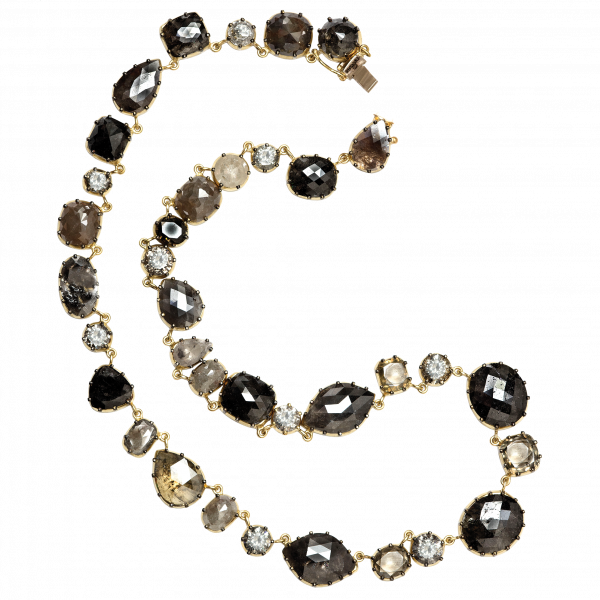
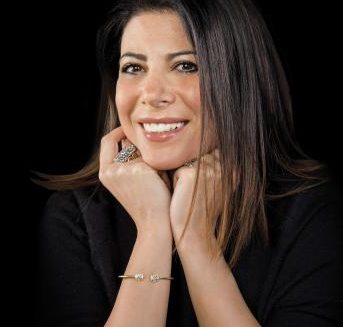 Once upon a time, there were two boys, Jirair Guiragossian and Harout Yepremian, who were the best of friends. They met in the Boy Scouts in Lebanon in the 1950s, where they acquired an appreciation for natural stones. As teenagers, the two Armenians became apprentice jewelers together. Just a few years later, each sat at his own jewelry craftsman’s bench in the same Beirut building.
Once upon a time, there were two boys, Jirair Guiragossian and Harout Yepremian, who were the best of friends. They met in the Boy Scouts in Lebanon in the 1950s, where they acquired an appreciation for natural stones. As teenagers, the two Armenians became apprentice jewelers together. Just a few years later, each sat at his own jewelry craftsman’s bench in the same Beirut building.
In 1964, Yepremian decided to move his young family to the United States, establishing his own jewelry business in Los Angeles. His pal stayed behind in Beirut. But when the Lebanese Civil War broke out in 1975, Guiragossian fled to Paris. There he became a master jeweler at Maison Cartier, but he yearned to be an artist with his own line. In 1984, he moved his family to LA, where he opened his own business in the same building where Yepremian worked: the California Jewelry Mart at 607 Hill St.
So, when their children—Guiragossian’s daughter, Sylva, and Yepremian’s son, Raffi, who had met once before briefly—locked eyes in an elevator in that same building in downtown LA in 1987, it wasn’t exactly a coincidence. It was more like fate.
That’s not how their parents saw it.
As soon as Sylva and Raffi started dating, their fathers, best friends for decades, stopped speaking. It seems to have been because Guiragossian feared that his free-spirited daughter—who then refused to go into the family business—would hurt his friend’s son. “If you’re just going to go to Vegas with him for the weekend, this is not the guy to do that with,” Sylva recalls her parents saying. But then, she adds, “we ran into each other at 607, in front of the elevators—and that was it.” Eventually, the dads came around. “The minute we got married, things changed.”
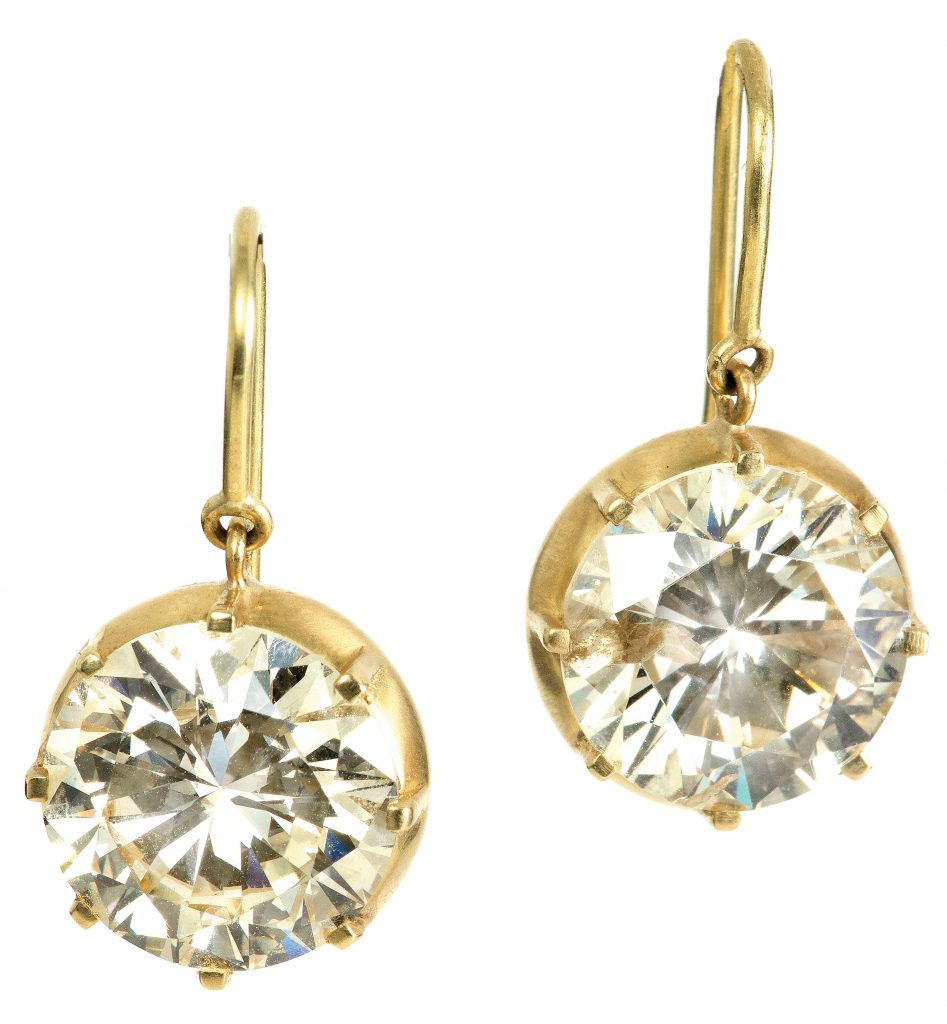
Transitional diamond earrings in 18k yellow gold with 8.36 cts. t.w. diamonds; $124,000; Sylva & Cie, Los Angeles; 213-488-1444; sylvacie.com
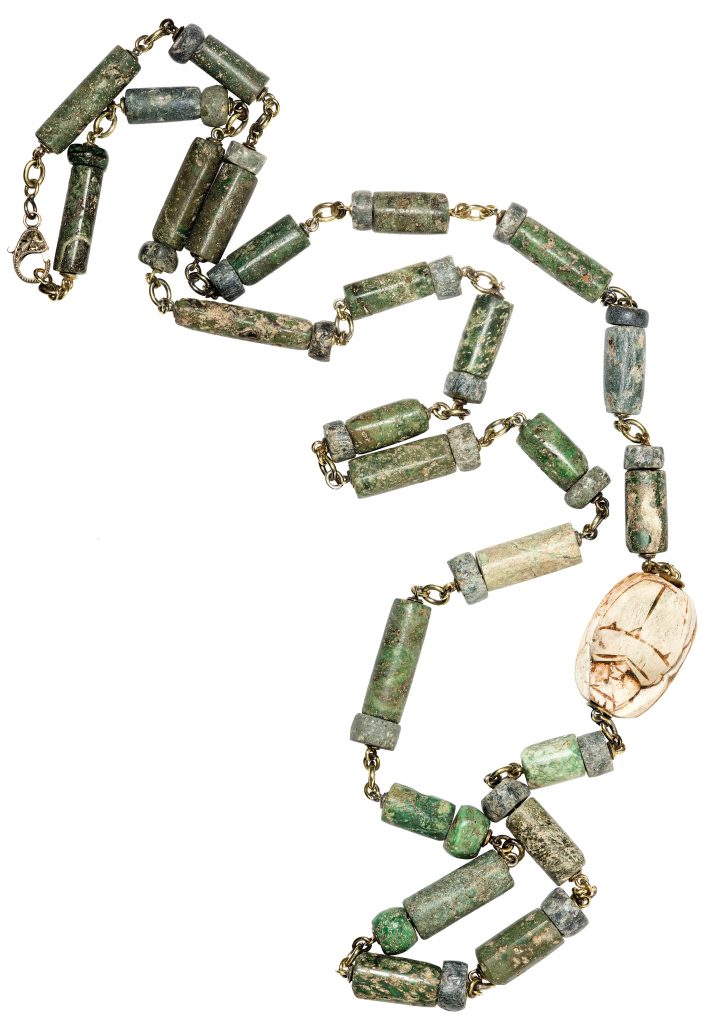
42-inch Tairona 11th-century Columbian necklace with Egyptian scarab in 18k yellow gold; $15,250
The Next Generation
Twenty-four years later, Sylva and Raffi Yepremian are following in their fathers’ footsteps as the collaborators behind Sylva & Cie, a collection of Old World jewelry handmade in the same LA building where they met. There, artisans who learned their crafts in the Middle East turn Sylva’s reclaimed stones into such one-of-a-kind pieces as an $11,000 Ancient Roman Egyptian glass bead necklace and $200,000 diamond chandelier earrings, which sell in a handful of high-end stores including New York City’s Bergdorf Goodman, Dallas’ Stanley Korshak, and Marissa Collections in Naples, Fla.
As in most marriages, Sylva and Raffi Yepremian have had their share of the good and the bad. First it was Sylva’s aunt: Her mother’s sister, who was her parents’ partner in the family jewelry business, was stricken with cancer at age 43; she died six months later. Sylva, who had been studying fine arts and getting by doing odd jobs like silk-screening advertising posters, stepped in. “I stopped everything and came into the family business, and I just didn’t leave.”
She didn’t always like the way things were done, however. “I saw it as this really old industry with things that were not maybe how I would do them,” she says gingerly. “I thought what my family was doing was fabulous but it was a lot of the same—a lot of channel-setting, a lot of the standards.”
Meanwhile, she and Raffi—who was running his own wholesale gold business—had two sons, Nicolas and Thomas, now 17 and 14. But work was difficult, especially during the gold boom. “The volume disappeared because of the gold price,” explains Raffi. “If this chain was $100, it became $500, essentially, and it was not affordable anymore. And I was pissed off, because after 26 years of working here, I had no control over [the market]. No matter how well you did your job, your destiny was not in your hands.”
And the work was taking a toll. “I would work with a designer for six months and we would come up with a fabulous collection. They would take it to Hong Kong, I would see the finished product, and I wanted to cry,” says Sylva, recalling the shoddy workmanship. “I put my heart and soul into it, and this is what ended up hitting the market? It was so disheartening.”
Amid all that, Raffi was diagnosed with Parkinson’s. Slapped in the face by a perspective borne of a progressive disease, the couple came to see their careers in a different light. They decided to start a new business, one in which Sylva was free to design what she wanted and Raffi felt less stressed.
“We’re not going to compromise,” Raffi recalls telling his wife. “We’ll make what you want to wear yourself, what you like, and we’ll find a customer.” He explains: “We don’t need to take over the world; we’re not looking to sell millions of dollars. We just want to make Old World jewelry, and try to have fun!”
And so they did.
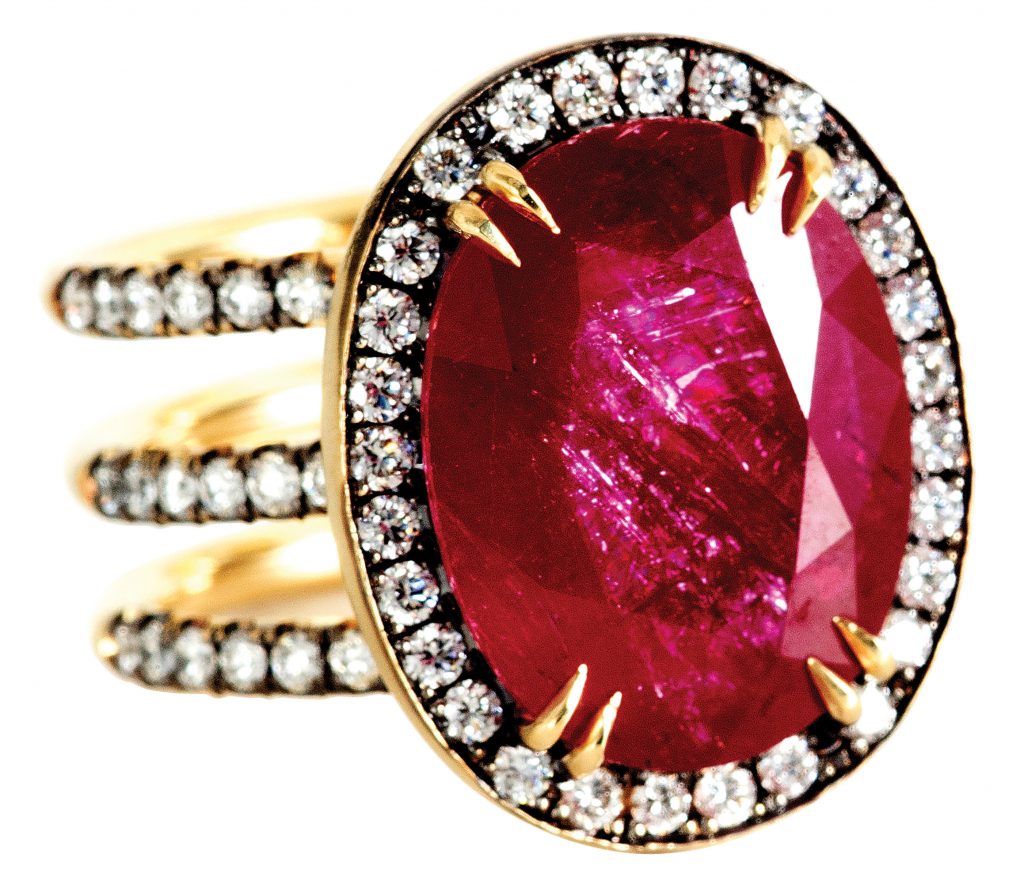
Zambian ruby ring in 18k yellow gold with 9.13 ct. ruby and 0.85 ct. t.w. diamonds; $21,000
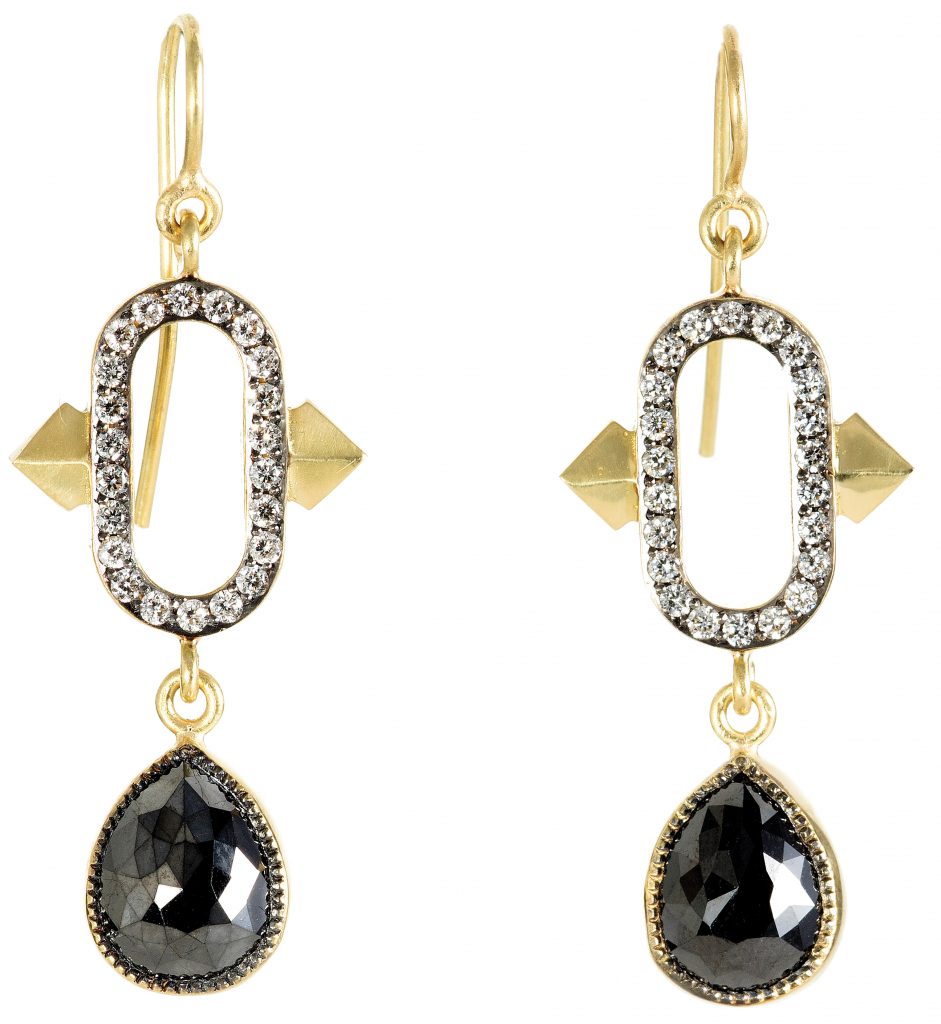
Pear-shape drop earrings in 18k yellow gold with 0.4 ct. t.w. diamonds and 6.74 cts. t.w. black diamonds; $12,000
Sylva’s Start
Sylva & Cie debuted in 2008 with a line of skulls. “I’m drawn to Victorian symbols,” Sylva says. “They’re romantic. I’ve always been fascinated with that era. Skulls to me were a symbol of how we’re all the same underneath and not to take things too seriously.”
And yet, the prices are, well, serious. Sylva pulls out some mummy beads from the fourth century. “The Boston Museum of Art was making room for new collections, so I was able to get some Egyptian antiquities and then I put them in jewelry.” Retail: $14,000. “You look at it and you don’t necessarily think someone is wearing a $14,000 necklace. My clients relate to that—they want to look a little bohemian, they want to wear fine things, but they don’t necessarily want to tell the world that they’re wearing a $14,000 necklace.”
The typical Sylva & Cie client is in her 40s to 60s. “They’ve done Cartier. They’ve done Van Cleef & Arpels. They want something more personal,” Sylva says. “I have a lot of women—you’d think they’re artistic bohemian, but they’re actually CEOs and major leaders in industry. Women gravitate toward something they can be the only one in the room with.”
Their jewelry is “not for everyone—we know that,” Raffi adds, smiling.
“I’m really proud of what we do, day in, day out,” Sylva says. “It’s with integrity. There are no compromises and, yeah, we’re not for the masses. And that’s okay. I don’t want to do that. I don’t want everybody to have everything. Most of what we do is one of a kind.”
The hardest part of crafting their jewelry is finding the jewelers to keep up the tradition. So they went back to the old country: Lebanon and Turkey. “My No. 1 setter is trained in Turkey by an old master,” she says. “He brought with him that tradition of setting stones the way things were set back then—not preset, not prong turnover, not polish-and-bead, nothing like that.”
Sylva never uses calibrated stones—“to everybody’s chagrin, by the way.” She explains: “Let’s say if you use this coin. This is a shipwreck coin from the 1500s. Look how variegated it is, not just in shape but in thickness. So the jeweler can’t just make a frame, he has to go back, fill every nook and cranny, hand-forge it, give it the curve that it needs so the coin sits properly. It’s not easy. Every piece is a new challenge.”
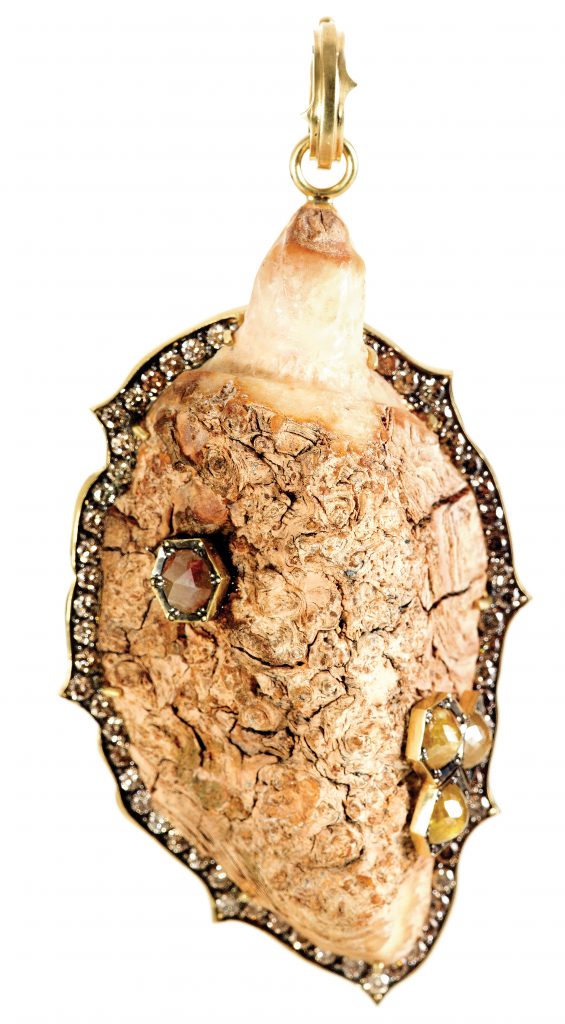
Mammoth turtle pendant in 18k yellow gold with 2.2 cts. t.w. champagne diamonds and 2.4 cts. t.w. rough diamonds; $18,625
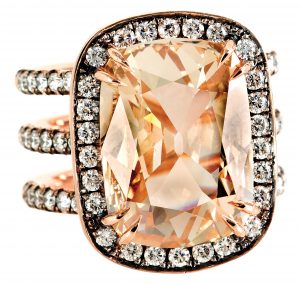
Triple shank cushion fancy light yellow-brown diamond ring in 14k rose gold with 0.91 ct. t.w. diamonds and 5.56 ct. cushion diamond; $189,000
Partners in Design
In the beginning, the challenge was also the pressure of making the economics of the business work. “For years, I was like, What is this going to sell for? How am I going to replace it? As the years have gone by, I’ve freed myself from that,” Sylva says. Every time she had a success making a piece with no restraints, with whatever material she wanted, it sold. “I’ve trusted myself, and listened to my voice more than before. Lately my design process comes from my gut. I’ll look at a stone and think, I can’t live without this, I have to figure out what to do with it. It’s much more emotional than, I have to sit and design six blue rings.”
Sylva keeps a sketchbook in her purse, and she uses her iPhone for taking pictures of things that inspire her on the spot. “It festers. It could be at 4 a.m. or while I’m driving, when the time comes,” she says of her creativity. “Say I’m getting ready for the Tucson show; I’ll edit my sketchbook to know what I want to bring in for the season and I’ll try to source accordingly.”
The pair say their partnership works because of the clear division of labor: She handles all things design and production. He oversees operations, administration, and finance. And he gets out of the office at least one day a week to play golf.
“It’s worked out because we’re never together,” he says, half-jokingly. “I’m completely naive about the jewelry.”
“And they don’t allow me on this end,” she says while sitting in the company’s offices.
She doesn’t let Raffi—or anyone else—see her designs while they’re still in process. “I don’t want to be influenced. You know, when it’s done, it’s done, and then I can take a breath. If they like it, great. If they don’t like it, I don’t care. It’s done. I don’t have to hear, ‘Make it smaller,’ ‘make it whiter,’ ‘make it cheaper.’ ”
They only wish Raffi’s father were alive to appreciate their success. “He would have loved this,” Raffi says.
They are fortunate that Sylva’s 79-year-old father, who’s retired, is still in the building—helping out as only he can. “Some of the things that are very, very precarious, where I feel like there’s a chance they might break—he’ll set them, because I will never be mad at him if he breaks something,” Sylva says. “And whenever I’m stuck, I ask him and he comes up with a solution. He’s the gold whisperer.”
Top: 18-inch diamond necklace in 18k yellow gold with 101.83 cts. t.w. gray diamonds; $167,500; inset: designer Sylva Yepremian